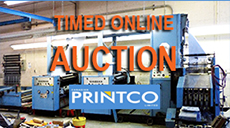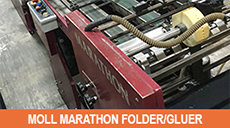
|
|
| Home › Articles › Here |
  
|

|
||||||||||||||
| By: Nick Howard | Date: October 2011 | Contact the Author |
|||||||||||||||
Cont'd from Part 1 |
|||||||||||||||
| 2011 is the new 1974 This 1974 period of high fuel and labour costs, coupled with poor employment and consumer confidence, hit the printing industry particularly hard, resulting in many hurdles to slow a business down. Just like today, an enormous amount of new ideas and technological development was changing businesses across all sectors, including the way in which printing companies operated their plants. Phototypsetting was taking hold along with faster machines with built-in labour saving devices. But, still, the 1974 outlook for printers remained tepid and caused a significant retraction on technology spend. This took many years to correct. The most obvious erosion of printing materials because of information moving to World Wide Web is clearly the biggest challenge facing today’s printer. Still, when one looks at the industry from 40,000 feet, the challenges facing printers in both 1974 and 2011 look very much the same. Certainly, not every printer today can adapt their shop into a Web-to-Print store-front, even as some competitors seem to flourish under such strategies. The 1974 period saw many printing companies not wanting to alter or re-invest in their businesses. Many companies closed, but, much like today, I doubt most people considered the entire industry when describing the downward slide. Indeed, a great many printers grew extemporaneously in the mid-1970s, even if they were only guided by a need to adapt and survive by all – means necessary. Those prosperous 1974 printing companies found margins where there were none and prospered. Definitely this continues today, behind all of the doom-and-gloom scenarios painted about printing there are those that sort of re-invent themselves and their businesses. In 1974, the difficulty of raising capital meant it was harder to move into newer higher productivity equipment. Most printers today face an equally frustrating finance environment, but there are some printers who are finding the funding and will be key catalysts for the printing industry in 2012. In short, people and companies are capable of great things when the chips are down. 1974 shows with very little reason or hope that business would improve, an industry at large began to re-invent itself and prove the Harris report correct. These companies that were able to adapt would never revisit the old 1960s production model again. They employed faster tools, greatly reduced overhead costs, and – most importantly – leveraged high-tech tools to eliminate as much cost from their manufacturing processes as possible. Adaptation was the key to survival back then, as it is the key to survival now.  The Harris Study, using data from the 1970s, also proved why printing continued to be a viable and necessary industry. If a report were to be commissioned today, the data and number crunching would be greatly altered, but I believe the resulting messages would be very much the same. Clearly, there are different hurdles affecting investment, but a 2011 printing company must continue moving with the times and grasp new technologies, or risk wasting away. The Harris Study, using data from the 1970s, also proved why printing continued to be a viable and necessary industry. If a report were to be commissioned today, the data and number crunching would be greatly altered, but I believe the resulting messages would be very much the same. Clearly, there are different hurdles affecting investment, but a 2011 printing company must continue moving with the times and grasp new technologies, or risk wasting away. Although Harris may have seen the future in electronics, the company also admitted (to itself) why it was not going to be able to compete in one area of printing machinery and chose to vacate. This thinking could easily happen again in 2012 as manufacturers try to offset a lower production base with everything from consumables to digital machines. Unfortunately, just like a company stock that’s plummeting in the market, none of these giants had yet the foresight of a Mr. Dively and Tullis. At a time when Harris controlled almost 50 percent of the sheet- and web-fed offset market, choosing to lop off a major piece of its body also took a great deal of guts. Harris clearly chose the right path at the time. Look at your data and see where you want to take your company in 2012. |
|||||||||||||||
| Contact the Author | |||||||||||||||
|
|||||||||||||||





